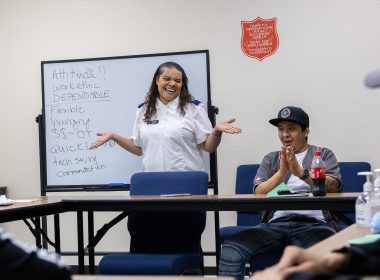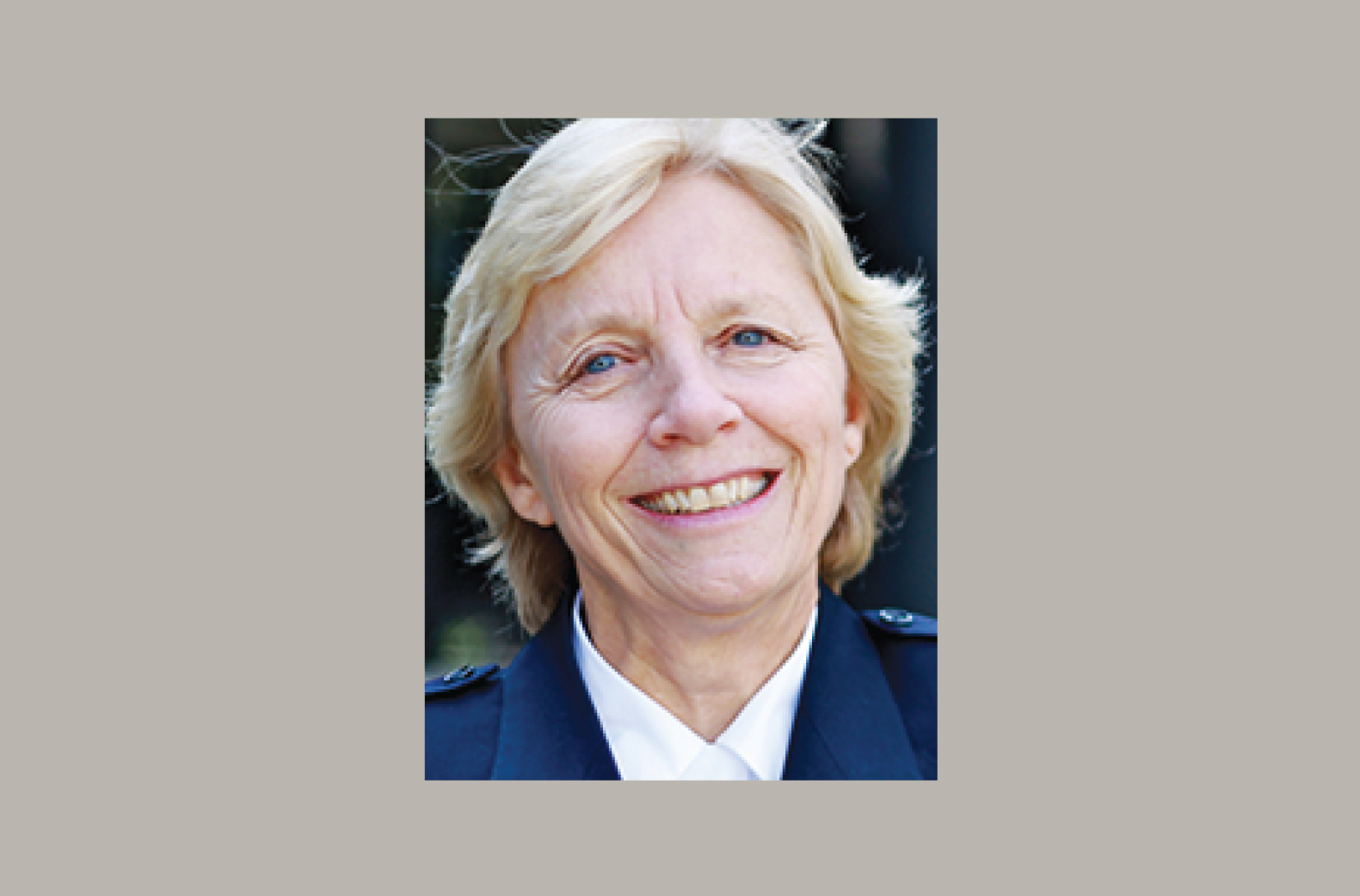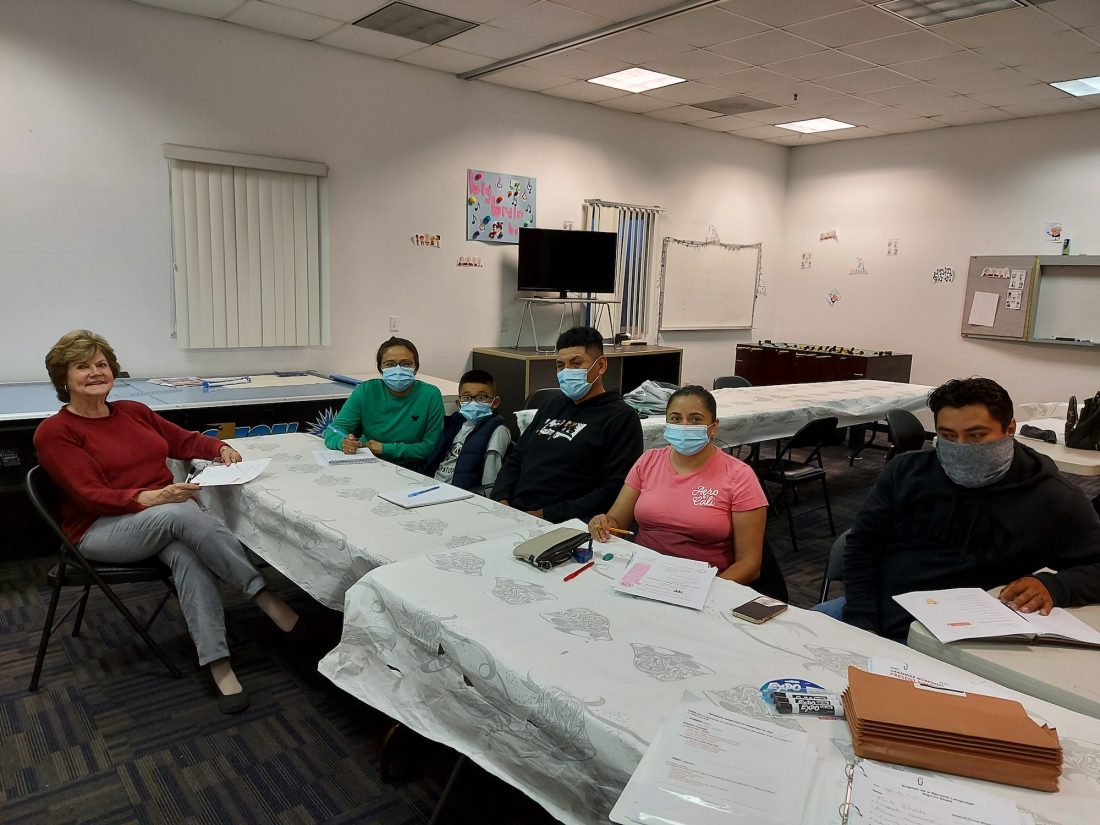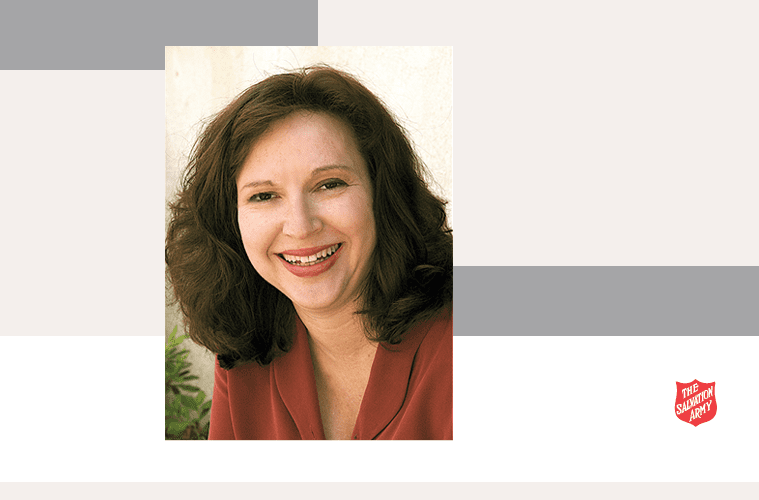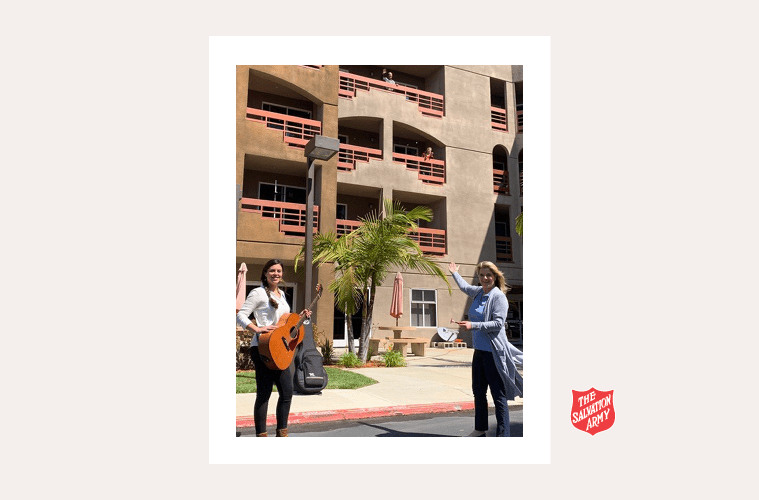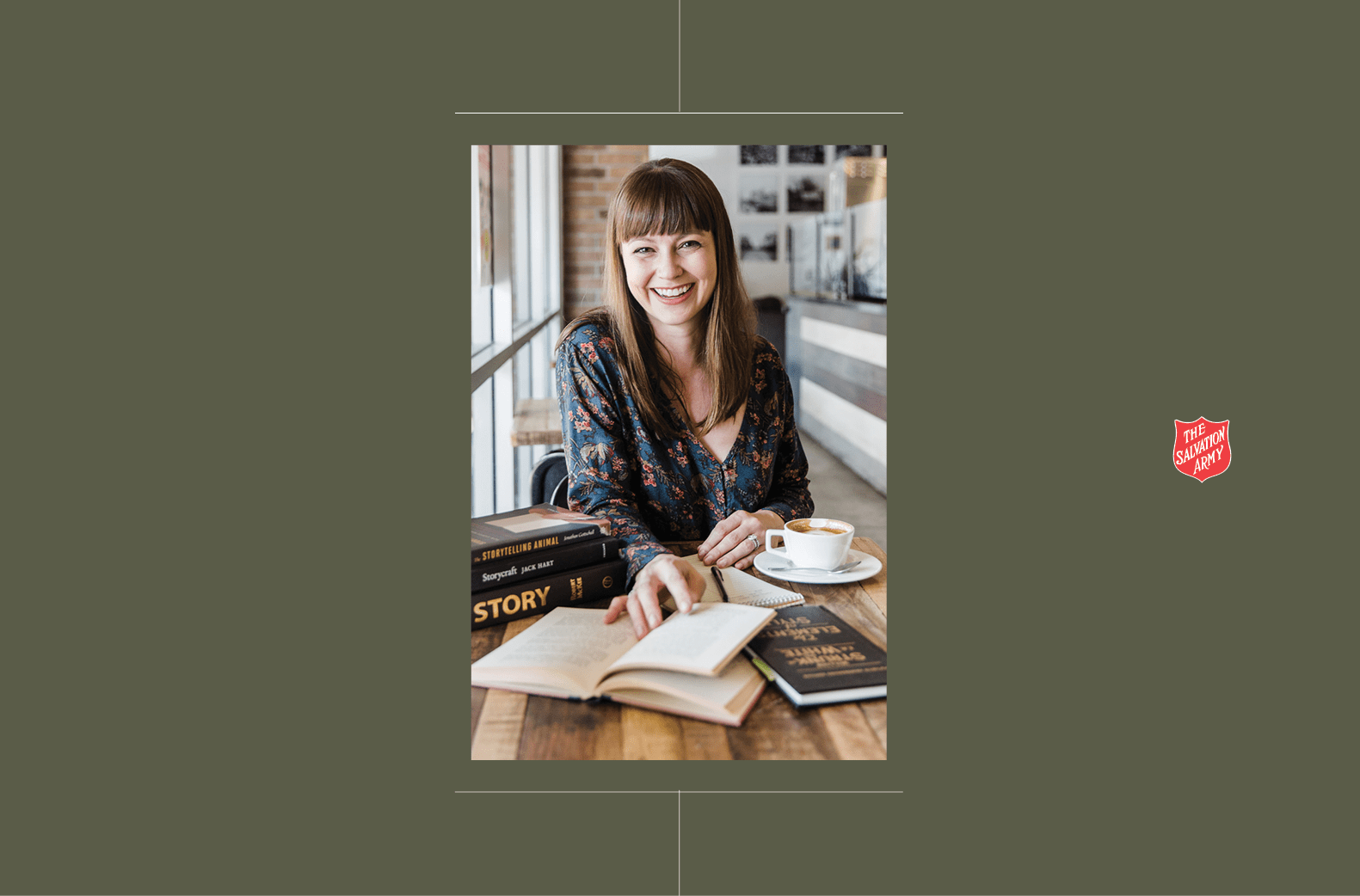This season, we’re learning more about The Salvation Army’s Pathway of Hope—a national initiative to provide individualized services to families with children, addressing their immediate material needs and providing long-term engagement to stop the cycle of poverty.
Last week, we took a deep dive into hope itself to better understand it and what it does psychologically and physiologically, plus how we can find more of it in our own lives.
Hope is part of the namesake of this initiative, the Pathway of Hope.
And you may be wondering how it all came to be about a decade ago.
Commissioner Carol Seiler, who retired from The Salvation Army in 2017 as territorial leader in the central U.S., was there at the start.
She takes it all the way back to a question posed to a meeting of The Salvation Army’s leaders:
“You’ve served a lot of people,” the advisor said, “but what are you doing to solve the issues?”
And that question ignited what we now know as Pathway of Hope.
It’s not a program, but an approach. About solutions.
And it is a journey, as Commissioner Carol Seiler—who has spearheaded much of the Pathway of Hope’s development since that day—will tell you.
Now in retirement, she is back at work helping establish the Pathway of Hope in the Northwest region of the U.S.
And as she says, the approach is simply to offer what you would to help a friend.
Show highlights include:
- How Pathway of Hope came about.
- The intended goal of the initiative.
- What Commissioner Seiler hoped it would achieve.
- How it is different from what The Salvation Army already is known for.
- What she loves most about it.
- What has surprised her as she’s seen it develop.
- How it has and is changing The Salvation Army.
- A story that sticks with her over the years.
- Her new role in the Northwest, the Seattle area.
- The power of hope.
- How to get involved in the Pathway of Hope.
Listen and subscribe to the Do Gooders Podcast now. Below is a transcript of the episode, edited for readability. For more information on the people and ideas in the episode, see the links at the bottom of this post.
* * *
Christin Thieme: Commissioner Seiler, thank you so much for joining the Do Gooders Podcast today. Welcome to you.
Commissioner Carol Seiler: Thank you. Thank you for having me.
Christin Thieme: Can you take us back to the beginning? How did the Pathway of Hope come about?
Commissioner Carol Seiler: Oh yeah, I’d be glad to. You know, it was actually, I think it was in Boston at a National Advisory Board meeting in 2010, if you could imagine. So 11 years ago, and we had a speaker from, the Bridgespan Group and he said his name was Tom Tierney and he said, “Salvation Army, good for you. You serve 17 million people. And what did you do about solving?” And it was just like, ah, you know, you realize that that was the meat of it. We don’t just serve people over and over again. What we really needed to be doing was to see what caused them to be in those positions of asking over and over again. And so as we brought that back and started talking about it with our team and with others. We actually did engage a consultant group, a strategic thinking consulting group.
And, and the goal became, how do we double our impact with these encounters? These people that are coming in month after month or week after week, you know, they know the cycle of when they’re eligible. They come in and we’re just, we’re not making a difference. We’re serving them and we’re getting really high outputs, but our outcomes are just not happening. So we also realized that so much of what we did and we did surveys in the territory actually. And people were like using words like “band-aids,” saying “we’d love to be able to go deeper” or “I feel like an ATM machine.” It was very transactional. “I’d rather be relational. I came into social work or social services to actually make a difference.”
And so we moved from a mindset of just processing as efficiently as possible to saying, you know what, let’s walk alongside folks and make a difference for children because the data showed that breaking into generational poverty and let’s really dig deeper and see what we need to do to actually make an impact. And that became the way it started. And people just got behind that because once you see that happen for a family and their life trajectory changing? I mean, that’s huge. That’s part of what reinforces all the other stuff you do. So that’s how it started and continued.
Christin Thieme: Yeah. So making an impact on the outcome. I love that. So how do you describe it? What is Pathway of Hope? What is its intended goal?
Commissioner Carol Seiler: Pathway of Hope is not a program. It’s an approach. I describe it as it is coming around and alongside someone and walking the journey with them in a way that says, what would you like to be different? If you could change things and you just needed some extra support to have that happen, what would you like to be different for your family, for your kids, for their future? And then how can I help you meet those goals? They may seem insurmountable, but we’ve got connections, we’ve got options, we’ve got some funding, we’ve got spiritual support, a community of believers that can come alongside as well. So it’s a holistic approach. It’s what you would do to help a friend or a neighbor, a family member, but it’s an approach that permeates what we do. It’s not a program, even though we have to do some programmatic things like they enter and exit in order to measure the outcomes, but it’s really an approach. It’s a case management approach building on the goals of the individual family and the participants.
Christin Thieme: So as this approach, I mean, you talked about the service versus the solving, but can you help us explain what’s different about this approach as compared to what The Salvation Army has always done?
Commissioner Carol Seiler: I think that’s a really good question because once people realized it was what The Salvation Army said they always did but hadn’t actually been able to deliver that for a long time that made a difference in your better-funded social service programs. Usually, about 10% of what’s available across a territory and all the local communities, about 10% of them have the funding in order to do case management. And we did this through data in the Central Territory so this isn’t just made-up numbers. It’s a caseworker who does part-time stuff plus janitorial plus admin stuff plus helps around the corps and they can only do what they can do until the funding runs out or the food bank is empty. So really we say we do it, but we can only do it where it’s adequately funded or required by contract. And so what actually happens is what we think has been happening over the years. It’s what we wanted to start happening. It’s what Booth wanted—it’s case management. So there was this little bit of aha moment when it’s like, oh, really? The leadership always thought, oh, of course we do that. The ground people said, well, we can’t do that. We don’t have the time. We don’t have the expertise, especially with the time we’re doing all these other things.
Christin Thieme: So when you say case management, can you help explain exactly what that is for somebody who might not understand that term?
Commissioner Carol Seiler: Sure. What that means is that for the folks coming in—and we actually use some measurement tools for this—but they come in, you assess the readiness for change. We start looking at, there are 15 domains or areas, so it’s like employment, housing, childcare, legal issues, substance abuse, there’s 15 of those. And there were grades on how those are functioning or not functioning. And so what case management does is begin to look at what are the areas where your goals are, how can we achieve those goals? If one goal is stable housing, how do we achieve that? We might do temporary rent assistance, and then you go into how do we find your employment or your income level? How can we help you increase that so that you’re able to pay the rent on your own? How do we start to solve those issues that are your barriers right now to stability?
So what the case management does is take the problems, take the barriers issue by issue and start to untangle them and resolve them. You have legal fees. And that’s part of where discretionary funding comes in for Pathway of Hope, because right now, emergency assistance or food bags, you know, food things, or rental assistance or utilities, those are the key ones, but let’s say your car was impounded. We don’t really have a source of funding for impounding cars. But if an impounded car means you can’t get to work on time because you can’t drop off a child and then go across town to get your job. So you lose your job. Paying the impound fee becomes an important case management approach. And so the discretionary fund helps the case manager do that. Like what’s the issue for this person? Does that make sense?
Christin Thieme: Yes, definitely. Looking at those individual things that might be different in each case.
Commissioner Carol Seiler: Exactly. So the Pathway of Hope approach has some consistent tools because we need data to consistently measure the outcomes for a scientific piece, you know, just for being able to go to grants and funders. But we also then in the consistency of the approach, you do an assessment and then you have individual goals, individual needs, individual issues based on the individual and the resources in the community. And then the exit is, have you met your goals? Are you accomplished? Are you more stable? Because really it was about getting out of that crisis vulnerability cycle and becoming stable, sufficient.
Christin Thieme: As you’ve seen this program develop over these years, what surprised you about that process?
Commissioner Carol Seiler: You know, you’d be surprised at what surprised me. The first thing that surprised me was actually, well, there are two things. One was a staff-based surprise that it was not always the people who were the most educated who got it and could get the job done. Sometimes it surprised me that it was the person who had worked there for 15 or 20 years and really knew the community and just had a heart for people. And they learned a thing of the tools and the skills, and they were able to make a difference. So the surprise was that you could train people who had been doing other things if they had the right capacity for the learning and they cared about people and they were doggedly going after the resources they needed. The second thing that surprised me was how, in a way, how scary it is for families to consider change.
And that there would be people who would say, no, I don’t think I want that help right now. So it is actually an interesting issue to try and engage people in that. And that’s where it’s been helpful with the motivational interviewing, but just the relationship-building where you say, you know what, trust me, what would you like to be different? How can I help you with that?
So one was a staff-based thing and the other was a client/participant-based thing. One more surprise is the resistance from leadership and the concern that numbers would go down. One of the strategies to deal with that, because we actually had that pushback initially, one of the strategies is that if you can find a different way to deliver your volume, so they don’t have to move out stats, if that’s important to you, that way the quantity, like use volunteers to sit down at a table, let people take their own whatever, you know, use your staff to actually lift the boats for families one at a time.
And when you started doing that, more people will be able to come in and as you get better at it and resources build, and your time engagement builds, you actually see quantity go up as well as quality, but that just takes a bit of time.
Christin Thieme: Yeah, absolutely. After all these years, is there any particular story of somebody that’s come through it, maybe had some sort of transformation you’ve seen that has stuck with you?
Commissioner Carol Seiler: You know, there’s a lot of stories, but there are a couple that do stick. One was a couple of years ago, one of the first Pathway of Hope individuals actually went to training, which was kind of cool because what it has shown was that embracing of the whole corps perspective had engaged in a way and her family that she saw this as a pathway for her in the future as well. And it wasn’t quick, it was longer-term, but she actually did go to training. It’s a smaller sample, but I think what it shows is the integrated piece.
So at the corps that we attended in Chicago, for example, the caseworker there did a fabulous job with the families that came to her and she had a code. She would say, Carol is my old friend. I’d like you to meet my new friend. And so it wasn’t, this is a Pathway of Hope client, but the code was, this is my new friend and here’s my old friend.
One Christmas, the person she introduced was a family, a woman with a baby. She was playing Mary in the live nativity scene. Her baby was the baby Jesus. And her 12-year-old son was one of those shepherd boys in the live nativity. And she said, Carol, I want you to meet my new friend who’s playing Mary tonight, and this is her baby. I thought that was just very natural, she had been embraced into the Christmas story.
The others are, you know, it’s the family that was in the car that goes into an apartment. That gets a job that had changed for the kids. I mean, all of those, those are comments with that dad on the newer element, every integration into a worshiping community at Christmas, not just getting the Christmas packages, but actually participating as Mary with her baby as a full member, you know, a participant like that. So that’s what the full approach can do. That’s who we can be as The Salvation Army.
Christin Thieme: In this whole approach, what is the power of hope?
Commissioner Carol Seiler: Oh, it’s actually quite huge and that’s been documented. I came out of healthcare studies in the past so we used the index, which has been documented and studied. And then Loyola University did some initial third-party evaluation of us. Lily Foundation said you will need a third-party evaluator. Don’t just tell us your story. So we started using the mantra that data must be undergirded by narrative to bring it to life, but narrative has to be undergirded by data to be real. So we started doing both those things and the documentation of hope shows that as people came alongside families, their response on that Herth Hope Index increased and as their hope increased their success in achieving goals and a higher score on the matrix increased as well. So the two went up together and one of the quotes among others, but one of the quotes about it was when someone said they would be there for me. And they helped me sort things through my hope changed. It’s like, I’m not treated like dirt. I mean, walking beside me, you’re there. I have somebody I can, you know, having friends to call on. And in a professional way, not, you know, not in a boundary-less way, but in a way of there is someone here for you. And let’s celebrate that and let’s rejoice together. And if it doesn’t work out, we find another pathway to solve this.
That’s what, it’s what we do in life. Those of us that have more stability and sufficiency, it’s what we do. When we’re in the middle of crisis all the time, when you’re always falling, you’re just surviving in many ways. And so to have someone say, let’s take a step differently and I’ll be there to help you with this. And when it’s a crisis, you call me, we’ll resolve it, we’ll work it through with people and we will change this trajectory based on your goals.
Christin Thieme: How has it, or is it, do you think changing The Salvation Army?
Commissioner Carol Seiler: I think it is definitely changing The Salvation Army. And the west is one of the later adopters. So the volume of that, of being a late adopter as you can move from what the others have done, when you see how it’s moved across the country and internationally, because it has made a difference in Canada, it’s been in Australia and Hong Kong. They asked for it in Europe. Internationally people have been embracing the approach and beginning to use that. I saw something a couple months ago that over 8,700 families had been helped through Pathway of Hope, which would mathematically come out to more than 16,000 children whose lives were changed. We’re seeing a whole new engagement in our frontline staff, because that was another surprise. Our staff needed Pathway of Hope. They needed to see success for themselves as well. And when you’re just pushing them food boxes out or just writing checks or, you know, making sure people follow the rules, that’s not a lot of success or satisfaction, like being an ATM machine. People want to help people succeed. That’s why even that kind of work.
Christin Thieme: And really see that transformation. What do you love the most about this approach?
Commissioner Carol Seiler: There’s a couple of things. I love that there was an evidence-based approach to it. That there’s data. I love that it requires people to do some thinking and problem-solving. And I love that it allows the client to direct that because my goals—I’m a middle-class white woman—my goals may be different than someone who’s come into the community and is learning a new language. My goals may be different than somebody who’s 25 and just starting out with a baby or one of the families recently in this area, a 22-year-old living in her car who was now about four months pregnant. And we took her on as a Pathway of Hope family here because the future of the child was a part of the goals of this mother. They’re all different goals.
Christin Thieme: So you mentioned the Seattle area, what’s your role now with the Pathway of Hope?
Commissioner Carol Seiler: I have been working part-time as the Pathway of Hope coordinator for the Northwest Division since the end of November. So that has been seven months. And part of that time has been also to support the training of it. We did some training back in February to support as well. And, you know, it’s all been to support hiring the two full-time people to keep this going. Like a lot of officer roles, you’re not the one that’s going to be there forever. So what you really want to do is how do we build a structure that will keep the concept moving forward and embedded into the dynamic and the ethos of the culture, the Army culture here.
Christin Thieme: So as you’re working to train people and really set up this approach in the Northwest area for the future, what do you hope to see from it or to see, come from it in the years to come?
Commissioner Carol Seiler: I really hope that it becomes such a natural part of the conversation that everybody working for The Salvation Army can articulate, defend, describe and refer people, or resolve things for people with a Pathway of Hope approach. But that staff who are not actually responsible for it can say, you know I can connect you over here. If you would be interested, we have people who can help you achieve goals for your family. And if you’re interested, I’ll make that connection. So they would know the network, they would understand it. They could explain it to people, they could recruit for it and they could fundraise.
Christin Thieme: Love it. Well, Commissioner, thank you so much for sharing more about this approach and about your role in it. And thank you for the work that you’re currently doing.
Commissioner Carol Seiler: Well, thank you. You know, I can talk forever on this, so there we go. Thanks, Christin. I love it. Thank you so much.
Don’t you love that way of looking at it: What would you do to help a friend?
But it’s not offering some help and hoping for the best. As Commissioner Seiler said, it’s a narrative undergirded by data.
That means we need to hear from someone involved in researching the Pathway of Hope and the transformation it enables.
Next week, we’ll do just that.
Until then, keep on doing good.
Additional resources:
- Subscribe and listen in this season to the Do Gooders Podcast with episodes 88-94 focused on exploring the Pathway of Hope.
- You’ve probably seen the red kettles and thrift stores, and while we’re rightfully well known for both…The Salvation Army is so much more than red kettles and thrift stores. So who are we? What do we do? Where? Right this way for Salvation Army 101.
- Are you best suited to join the Fight for Good in disaster relief? Mental health? Social justice? Take our What’s Your Cause quiz and discover where you can make the biggest impact today.
Listen and subscribe to the Do Gooders Podcast now.




